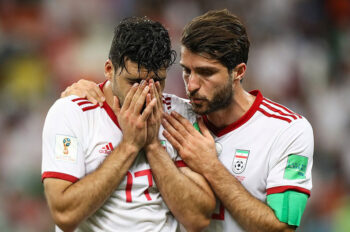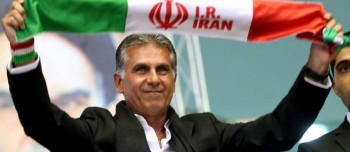Asia should follow Africa’s lead
 ESPNsoccernet – KUALA LUMPUR, When it comes to continental championships, the European version reigns supreme. Euro 2012 action will be on televisions, newspapers, websites, phones and tablets all over the world. Copa America comes next with its heavyweights of Brazil and Argentina. Then, third on the podium, stands the African Nations Cup. Asia should be wondering why.
ESPNsoccernet – KUALA LUMPUR, When it comes to continental championships, the European version reigns supreme. Euro 2012 action will be on televisions, newspapers, websites, phones and tablets all over the world. Copa America comes next with its heavyweights of Brazil and Argentina. Then, third on the podium, stands the African Nations Cup. Asia should be wondering why.
How can it be that this tournament (currently underway) receives many times more international coverage than the Asian Cup did this time last year? The Asian Cup brand should be a prestigious one; Asian football should be a huge deal and the quadrennial tournament an eagerly-awaited showpiece event. The continent has more than half of the world’s population and it has a healthy and growing proportion of the money that is currently sloshing around the game.
Standards may vary wildly, but at the top level the infrastructure, facilities and stadia in Asia rival any in the world and surpass most. Parts of the continent are emerging as real players in the global game. East Asia is starting to flex economic muscles that have long surpassed Europe’s. The potential in south and south-east Asia is starting to be seen, albeit inconsistently, and the funds in the western reaches of the continent are known to all.
Asia is improving all the time on the field and now holds its own at World Cups. Six times its teams have progressed to the second round – North Korea and Saudi Arabia once, with Japan and South Korea doing so twice (Australia in 2006 was an Oceania qualifier). Africa has seven: Cameroon, Senegal and Morocco with Nigeria and Ghana making it twice. At the most recent tournament held in South Africa with a record six berths for the continent’s teams, only Ghana survived the first round while half of Asia’s quartet, South Korea and Japan, progressed to the knockout stage. Those two rivals met in the semi-final of the Asian Cup a year ago and it was high-quality fare and a great advert for the continent. The standard of football is getting better by the year.
Yet despite all that, the difference in the level of international interest and coverage when it comes to the competitions of Asia and Africa is striking. Even absence doesn’t seem to make the global heart grow fonder, with a meeting every four years as opposed to the biennial African tournament not making it any more special.
Perhaps the major reason is the players. Big names make for big games. When it comes to international stars, Africa outshines Asia. The huge exodus of talent from Africa’s leagues may have negative consequences for the long-term health of the domestic game, but this export drive has done wonders for the image of African football overseas.
That doesn’t mean that every game is seen as a massive one but names such as Eto’o, Drogba, Kalou, Toure, Okocha, Weah, Kanu, Essien, Gyan, Adebayor, Keita and Kanoute attract attention whether it be broadcasters, journalists, sponsors or fans. Asia’s list is full of excellence: Honda, Nakata, Kagawa, Park, Lee, Karimi, Nekounam and Cahill but even the likes of Park and Honda have not yet been in the top 20 contenders for the Ballon D’or – though the Korean, in 2005 and 2008, and the Japanese star in 2010, really should have been. (It is also scandalous that such players are overlooked by the AFC for Asia’s own award, the confederation really could do more in that and other aspects to promote its game internationally.) In the past five years alone there have been 11 African contenders.
That will change over time. Asia is just starting to produce genuine world class talent, but until more of it is seen in the big clubs and the big leagues, they are, at least for the foreseeable future, not going to become international stars. And the ones who do make it are not always the headline-grabbers on the pitch or make any headlines off it either. In Asia, intelligent, technically gifted and tactically aware stars exist by the dozen but those that get fans on the edge of their seats on a consistent basis are less common. Players such as Eto’o, and in the past Okocha, help reinforce the impression that African football is full of flair. This flair factor may be over-stated in Africa but the Asian stage could do with a little more.
As well as the stars, the African Nations Cup also comes up trumps in terms of stories. These narratives off the pitch are an oft-overlooked aspect in persuading international editors to hand over precious column inches. This time the national team of Libya is one attracting attention of the neutrals. Zambia, who lost its entire national team in 1993, is another and the fate of Sudan, a country that recently split into two, provides another angle that engages. The relative linguistic accessibility of African officials, players and coaches also helps.
That is not to say that Asia doesn’t have tales to tell. It has lots: Palestine played a first ever World Cup qualifier on home soil recently, then you have the improvements in Afghanistan football, the ambition of Myanmar and the potential of the Philippines, to name just a few, but these countries don’t yet get anywhere near the Asian Cup.
In the 2011 tournament there was North Korea but the Chollima had shed their air of mystery in South Africa a year previous. Most of the international attention was fixed on finding any sign that recently announced 2022 World Cup host Qatar was not going to be up to the job 11 years ahead of time – not something that is going to heighten neutral appreciation of the tournament itself. The addition of Australia to Asia has helped but writing about another Chinese failure is not the stuff on which a global brand can be built. Iraq’s success in 2007 was the first time that an Asian Cup made genuine global and non-sporting headlines, though that came right at the end of the tournament. Welcome as it was, the big stories are needed ahead of the big kick-off.
There were also few fans in 2007 and 2011 – certainly not enough to give the impression that there is a major tournament going on. You have to go back to 2004 and China for consistent attendances and atmosphere. In 2007 and 2011, with some notable exceptions such as Jakarta, both those aspects were lacking and did not accurately reflect the exotic and passionate nature of much of the continent’s football scene. Australia, a country whose fans and media are largely ignorant and disinterested when it comes to Asian football, has a big job in 2015.
The African Nations Cup doesn’t always have full stadiums either, as is being seen this time in Equatorial Guinea and Gabon, but there is a perception (or stereotype) around the world that the tournament equals colourful arenas full of colourful fans playing drums, dancing and watching exciting flair-filled football.
At least it shows Asia what is possible with a little more development, a little more imagination and a lot more selling of the Asian Cup brand. If Africa can do it then so can Asia and with all the potential the giant continent has, ultimately it can do it so much better.




